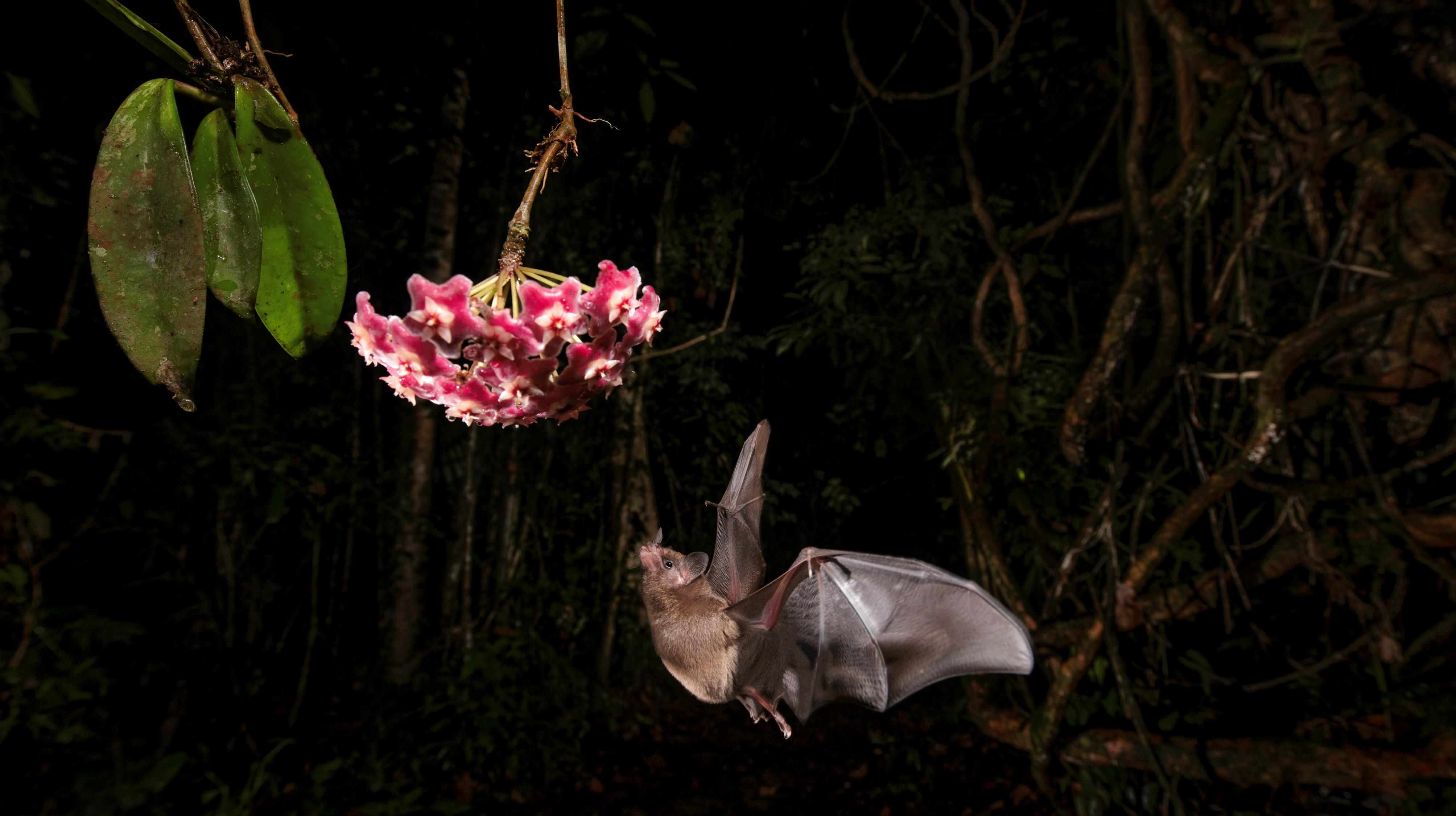2025-01-30 スイス連邦工科大学ローザンヌ校 (EPFL)

Pallas’s long-tongued bat (Glossophaga soricina) © Gregory Basco/www.deepgreenphotography.com
<関連情報>
- https://actu.epfl.ch/news/bat-wings-boost-hovering-efficiency-2/
- https://www.pnas.org/doi/10.1073/pnas.2410833121
高度に変形可能な羽ばたき膜翼がホバリング時の前縁渦を抑制し、より優れた性能を発揮する Highly deformable flapping membrane wings suppress the leading edge vortex in hover to perform better
Alexander Gehrke and Karen Mulleners
Proceedings of the National Academy of Sciences Published:January 28, 2025
DOI:https://doi.org/10.1073/pnas.2410833121
Significance
When insects flap their wings, they typically create a vortex on top of the wings which helps to keep them aloft. When bats flap their wings, the wings deform much more than insect wings. Our study provides insights into the role of the vortex when flapping wings are highly deformable. We have used flexible membrane wings that can create more lift than stiff wings by bending and changing shape when they are flapped back and forth. When these flexible wings bend enough but not too much, the flow follows the wing curvature without creating a vortex which increases the lift. Our findings help explain how bats fly efficiently and provide ideas for designing and controlling human-engineered flying vehicles.
Abstract
Airborne insects generate a leading edge vortex when they flap their wings. This coherent vortex is a low-pressure region that enhances the lift of flapping wings compared to fixed wings. Insect wings are thin membranes strengthened by a system of veins that does not allow large wing deformations. Bat wings are thin compliant skin membranes stretched between their limbs, hand, and body that show larger deformations during flapping wing flight. This study examines the role of the leading edge vortex on highly deformable membrane wings that passively change shape under fluid dynamic loading maintaining a positive camber throughout the hover cycle. Our experiments reveal that unsteady wing deformations suppress the formation of a coherent leading edge vortex as flexibility increases. At lift and energy optimal aeroelastic conditions, there is no more leading edge vortex. Instead, vorticity accumulates in a bound shear layer covering the wing’s upper surface from the leading to the trailing edge. Despite the absence of a leading edge vortex, the optimal deformable membrane wings demonstrate enhanced lift and energy efficiency compared to their rigid counterparts. It is possible that small bats rely on this mechanism for efficient hovering. We relate the force production on the wings with their deformation through scaling analyses. Additionally, we identify the geometric angles at the leading and trailing edges as observable indicators of the flow state and use them to map out the transitions of the flow topology and their aerodynamic performance for a wide range of aeroelastic conditions.


